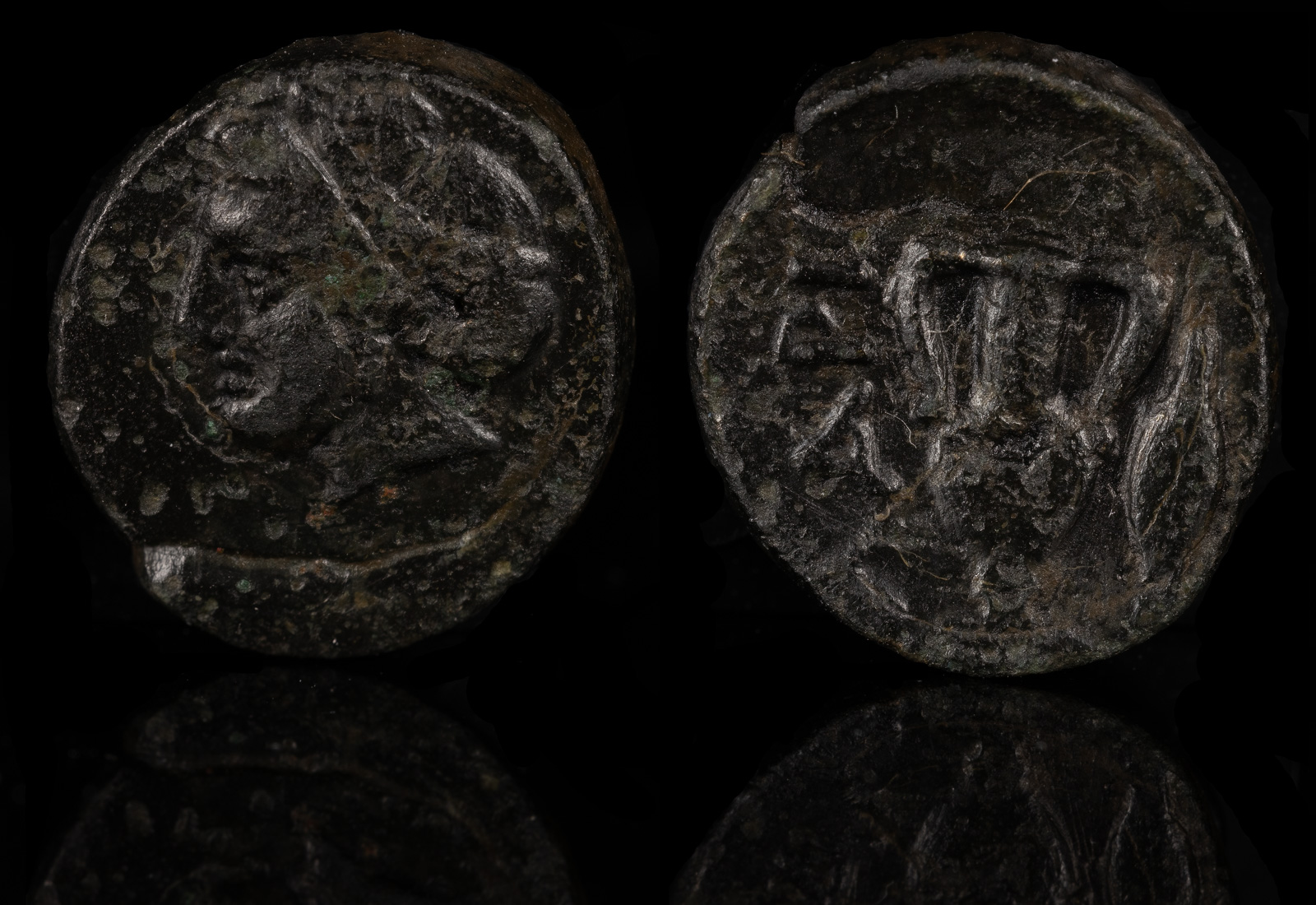
Troas, Larissa Phrikonis
Circa 350 BCE
AE 1.15g, 10mm
Female head with hair in a sakkos.
Amphora, grain to right “ΛAPI”
SNG Deutschland 19, 291
Ex Aegean Numismatics
Most ancient scholars believed that it was this Larissa that Homer referred to in the Iliad. After all, it’s unlikely that a city in Thessaly would side with the Trojans.
Archeological evidence shows that the city was first inhabited sometime in the third millenium BCE. It took its name ‘phrikonis’ from a garrison of Egyptian soldiers that was quartered there during Persian times.
In 400 BCE, the city was besieged by the Spartan general Thibron. Not able to assail their walls, he resorted to digging a tunnel to divert their water supply. The Larissan’s though, countered by throwing rocks into the shaft. Therefore Thibron built a shed over the shaft, but the Larissan’s just burnt it down. Thibron then gave up the siege.
In 279 BCE, the city was annihilated by the Galatians, a tribe of Celts. It never appeared to recover, and by the time Strabo wrote about it the city was abandoned.
As many of you know, I like “puzzle coins”, though these days I have a rule that I need to figure out an attribution before purchasing it. The coin below seemed a challenge. It’s debatable which is the obverse vs reverse, but on one side there’s a kantharos and on the other is a kerykeion or caduceus. This is an ancient symbol often associated with Hermes.

Troas, Larissa Phrikonis
4th century BCE
Æ 8mm, 0,51g
Obv: Kantharos or Amphora.
Rev: Λ-A. Kerykeion
Unpublished cf Numismatik Naumann 102 lot 23
To the left of the kerykeion is what appears to be an ‘Λ’. Some searching brought up this coin. To me, these appear to be the same exact type, and thus on Naumann’s coin you can clearly see the inscription is Λ-A.
So, that should narrow it down – only it doesn’t so much. A lot of ancient cities started with ‘la’. My first thought was ‘Lakedaimon’ and my heart raced a bit, but I shot this down pretty quickly. Not only was Lakedaimon not known for coinage at this time (and ancient sources confirm this), but small bronzes like this weren’t common in mainland Greece at the time. No, this was likely some mint in Asia Minor.
From some further searching, I believe the answer is Larissa Phrikonis. Larissa Phrikonis minted coins with an Λ-A flanking a kerykeion and a kantharos.
Larissa Phrikonis captured by Lydians, who install Egyptian soldiers.
Larissa Phrikonis is beseiged by the Spartan general Thibron, who accomplishes nothing.
Larissa Phrikonis is burnt to the ground by Galatian raiders.